Published on:
As NWMLS celebrates our 40th Anniversary in 2024, let’s take a look back at the evolution of how listings have been mapped over the last four decades.
1980s – Map Books
Before smartphones, GPS, and online maps, real estate professionals relied on spiral-bound books that contained detailed grid maps of cities and neighborhoods to locate properties. Many brokers never left home without their trusty map book!
One of the most popular map books was the Thomas Guide. Founded in 1915 in California, Thomas Guide eventually branched out to cover counties in Nevada, Arizona, Oregon, and Washington. The earliest Thomas Guides specific to Washington date back to 1955 for King County, 1956 for Snohomish County, and 1966 for Pierce County.
Other map companies produced books to cover the rest of counties in Washington including Phoenix Guide (Grant, Kittitas, and Yakima counties), Roadrunner (Kitsap, Jefferson, Clallam, Gray Harbor, Thurston, Lewis, and Mason counties), Totem Guide (Island, Skagit, Whatcom, and San Juan counties) and Clark County Road Atlas.
Map coordinates were included for all listings and printed in “The Book.” To find the listing below (M: 744 G: G2) brokers would turn to page 744 in the Thomas Guide, and locate square G2 in the map grid.
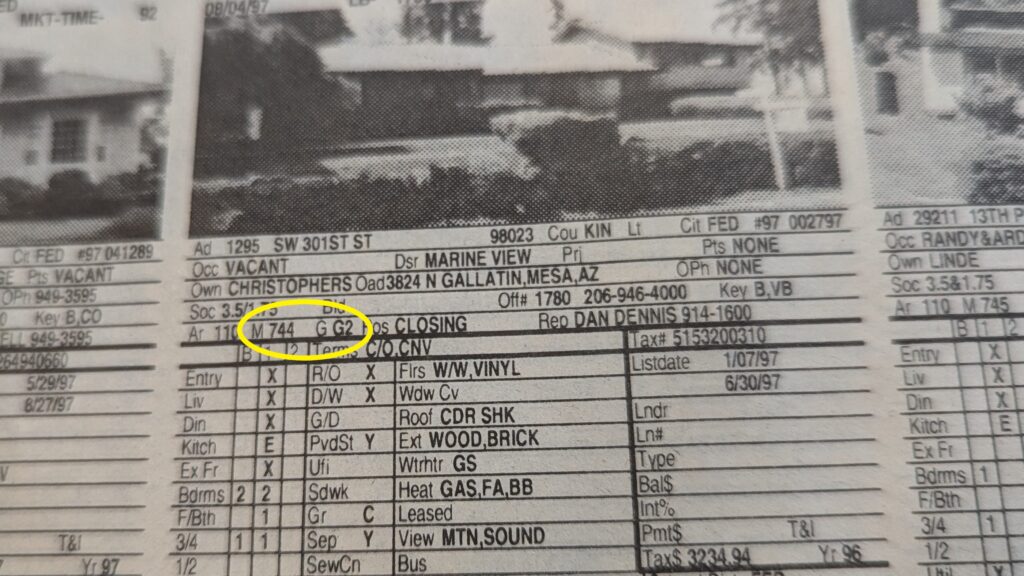
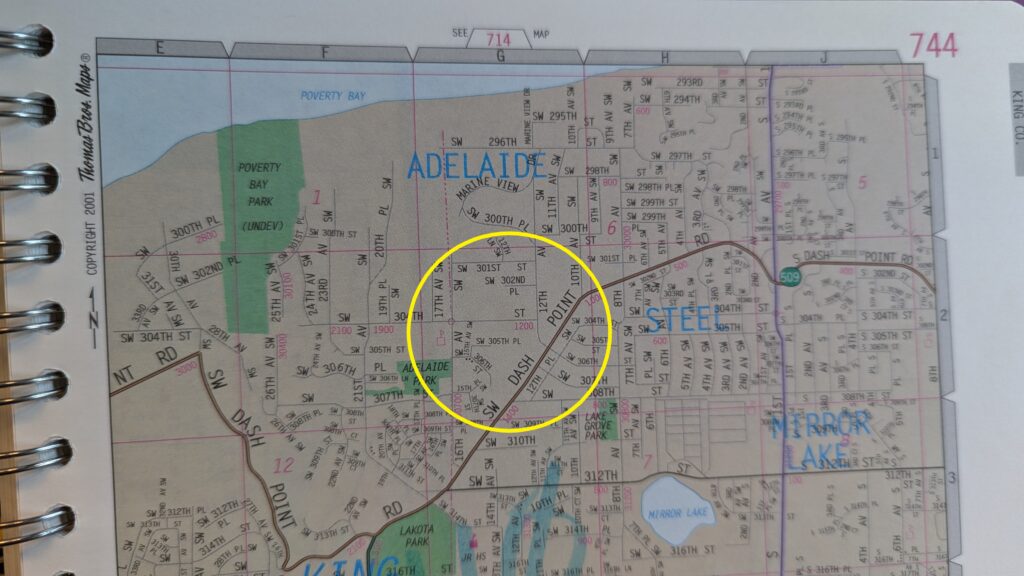
1990s – Mapping Software
The first personal computers were introduced, and several software programs were developed for real estate professionals to view listing information. In 1992, an innovative mapping software program, Latitude, was developed by Northwest Geografx of Kirkland using map coordinates from the various map books.
When submitting listings to NWMLS, brokers would select the applicable Map Book, then enter the Map Page and Map Coordinates. To search for listings in a specific area, brokers could enter coordinates such as (Map=506 GRD=A1-A5) or, use operators to link a neighborhood that straddled two pages, such as (Map=506 AND GRD=F1-F5) OR (Map=506 AND GRD=A1-A5). Listed properties would appear as stars on an interactive map. Clicking on a listing’s star would display a window of information about the house.

Mid 1990s – Maps for Consumers
As the internet became more popular, NWMLS launched NWRealEstate.com in 1996 – one of the first public-facing websites for consumers to access MLS listings. Consumers could click anywhere on the map and list of properties in that area would pop up with public-facing listing information and one photo of each home.
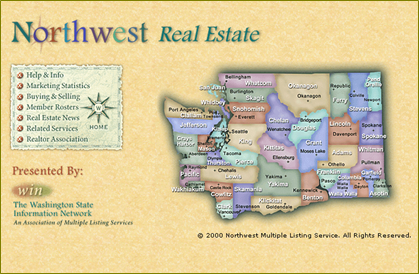
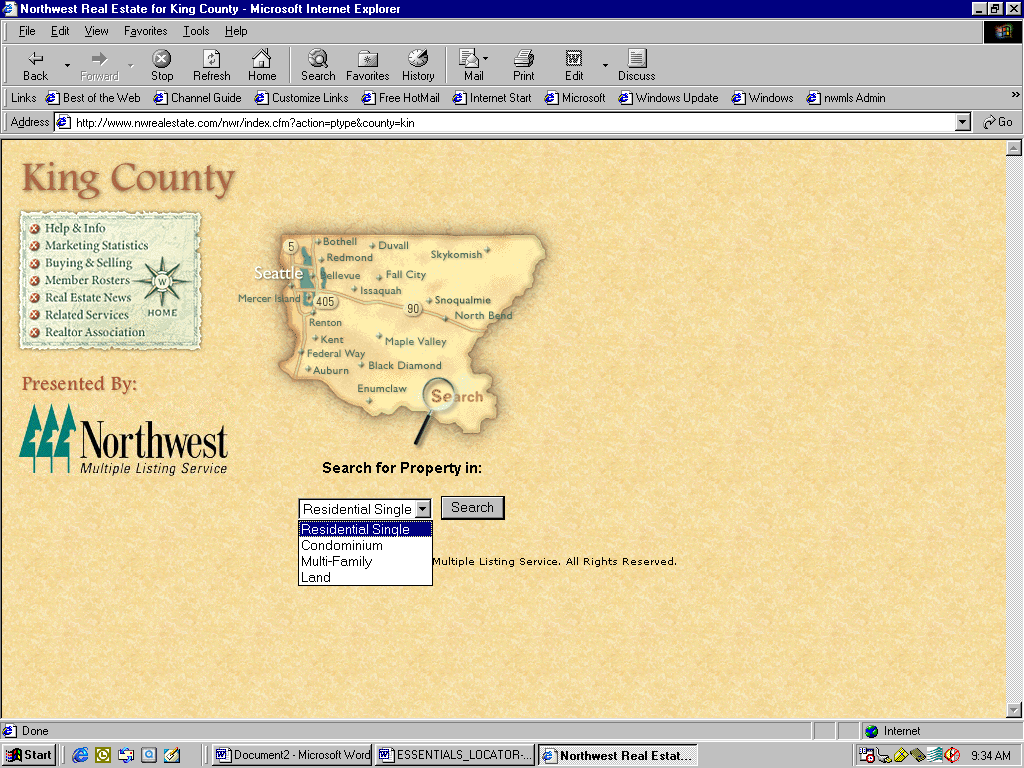
2000s – Online Mapping Integration
In the early 2000s online mapping software was integrated with the MLS database, Locator.

Brokers could purchase either MapQuest, MapPoint, or Microsoft Streets+Trips to view listings on an interactive map without having to enter specific map book parameters, and even had the option to create and print turn-by-turn directions. Eventually, this popular feature was added to the floating toolbar so that all members could create and print directions.
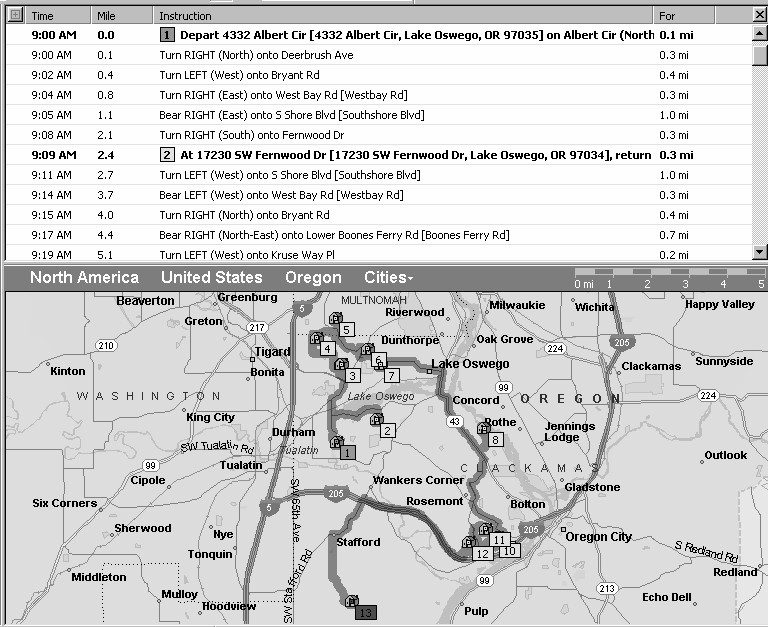
Mid 2000s – MapQuest Integration
MapQuest became fully integrated with Locator, giving brokers even more options to interact directly with the interactive map without having to purchase additional software. The Area Search allowed brokers to draw a box around a desired neighborhood while the Radius Search allowed brokers to select a specific address, then search for listings within a desired radius, such as a half mile, one mile, 10 miles, etc. Left clicking on any parcel outline would display property information, including Realist tax data and Locator listing data.
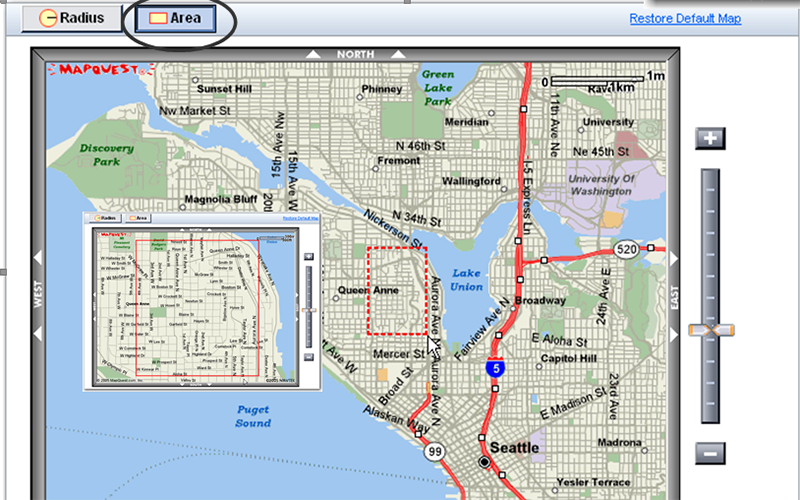
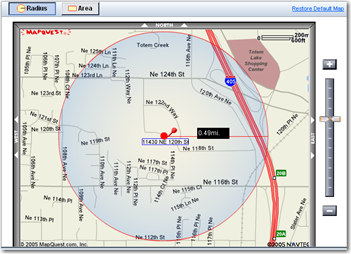
2010 – Matrix: Bing Maps Integration
When the current NWMLS listing database Matrix was launched, Bing Maps was fully integrated, making maps searches even more intuitive. Brokers had the option to draw a freeform “polygon” search outline on the interactive map to find all the listings in a very specific location. Several searches to include or exclude specific areas could now be displayed on a single map.
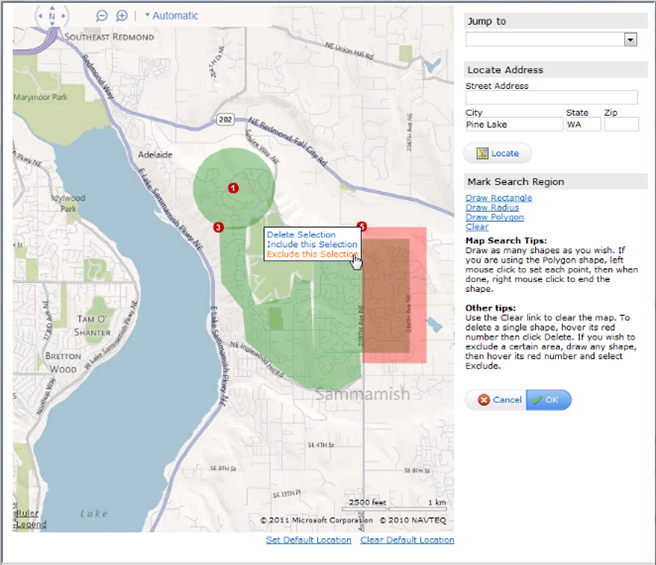
2012 – Mobile Maps
NWMLS provided its first mobile app, HomeSpotter, allowing brokers to quickly navigate Matrix using an iPad, iPhone, or Android device. The app had the ability to use their mobile device’s GPS to search for listings while on the go! The consumer-facing version allowed clients to browse properties in their desired neighborhoods using the interactive map feature.
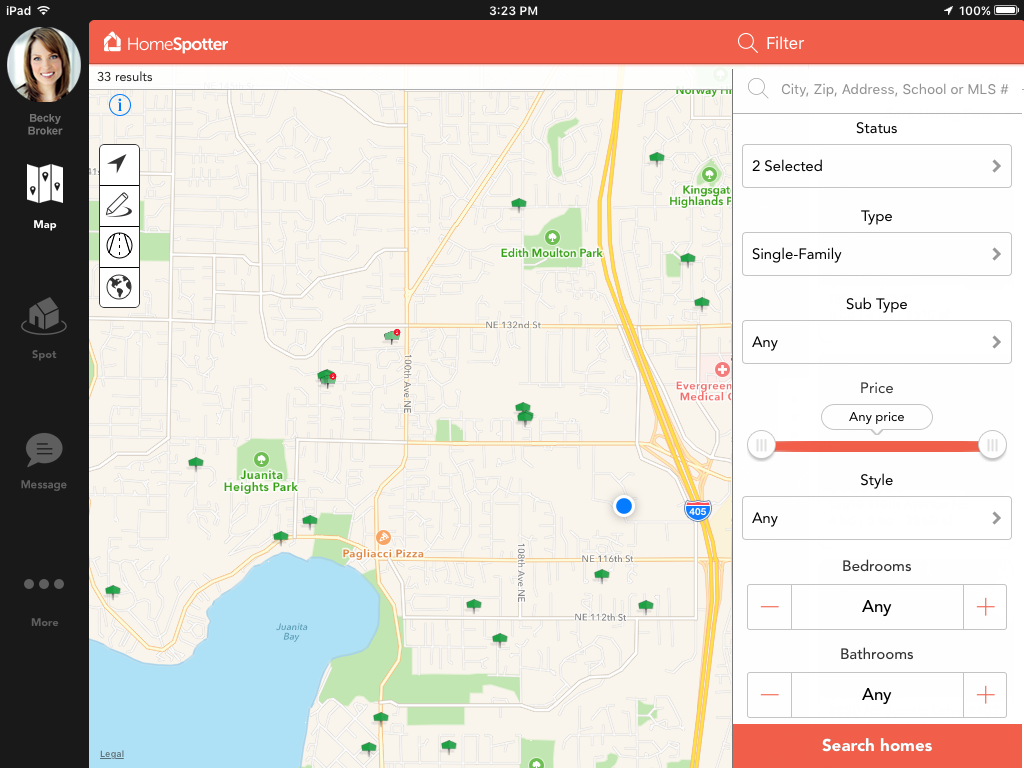
2016 – INRIX Drive Time™
The INRIX Drive Time™ search was added to Matrix allowing brokers to quickly find listings based on commute times. Simply enter the location, the time of day driving to or from that location, and how long of a drive. INRIX automatically draws a polygon search on the map to include listings within a desired commute time.
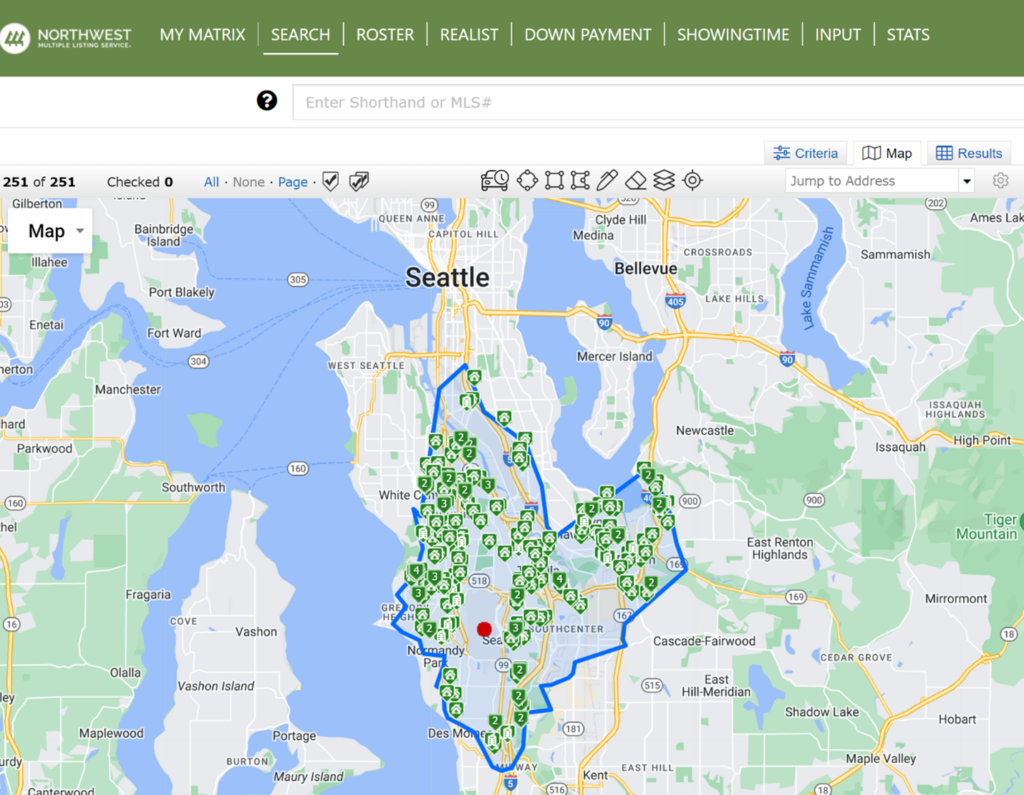
2017 – Matrix: Google Maps Integration
Google Maps was integrated with Matrix giving brokers different viewing options with satellite, terrain, and street views.

2021 – OneHome Client Portal
A brand-new client portal, OneHome, was introduced in 2021. Using the latest technology to offer a better browsing experience, OneHome includes a large interactive map. Select Boundaries, Drive Time, or Points of Interest for additional map layers to learn about a specific neighborhood.
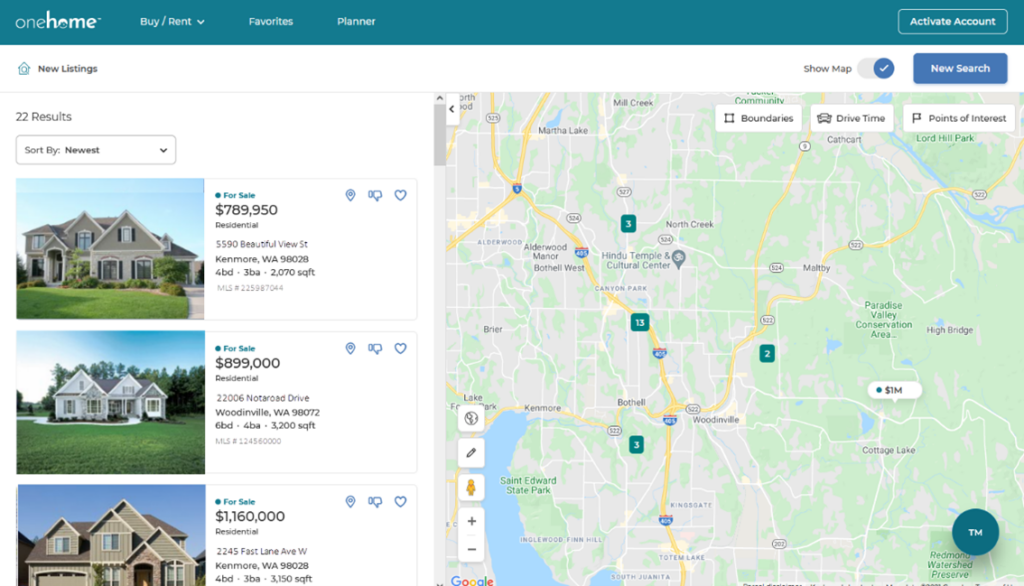
2023 – New Public-Facing Listing Search
NWMLS launched a new public-facing listing search to replace NWRealEstate.com in 2023. Consumers can now search for all active NWMLS listings by clicking on the “Search Listings” button on the www.nwmls.com home page, which brings up a large interactive map.
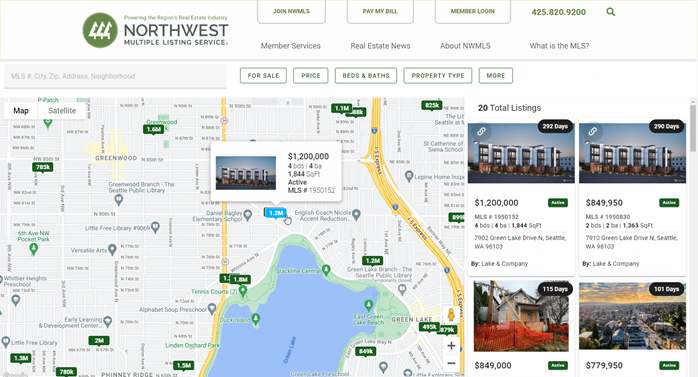
2023 – Northwest MLS Mobile App
The NWMLS mobile app is fully integrated with Matrix and OneHome and offers powerful search tools, including a Map Search which automatically displays listings around your current location. You can easily swipe the map to target a different area, pinch-to-zoom to focus in, and filter your results by a wide range of criteria

2024 and Beyond
Over the last four decades, NWMLS has been committed to embracing new technology that makes searching for homes faster and easier for our members. We are continuously reviewing existing products and tracking new and advanced technology to ensure our membership has access to an array of products, services, and support to help them deliver an exceptional experience to their clients.